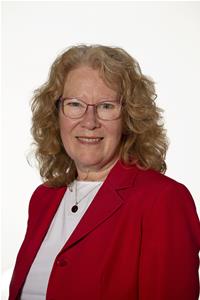Subscribe to updates
You'll receive weekly summaries about Barnet Council every week.
If you have any requests or comments please let us know at community@opencouncil.network. We can also provide custom updates on particular topics across councils.
Health & Wellbeing Board - Thursday 23rd January, 2025 9.30 am
January 23, 2025 View on council website Watch video of meeting Read transcript (Professional subscription required)Summary
The Health & Wellbeing Board noted the progress of work at the Graham Park Estate and accepted the draft Joint Health and Wellbeing Strategy for the period 2025-2035, subject to a final round of public consultation. It also received a verbal update on communicable diseases.
Health & Wellbeing at Graham Park
The Board received presentations on the work that has been done to improve the health and wellbeing of residents of the Graham Park Estate.
The estate is the focus of a major regeneration project that will see the demolition of existing housing and the construction of new homes and community facilities. The project has been ongoing for over 20 years and has had a significant impact on the lives of residents.
A new governance structure, the Graham Park Coordination Group (GPCG), has been put in place to oversee the delivery of services to residents. It has a number of sub-groups looking at different aspects of life on the estate, including adults' health and wellbeing, children, families and young people, community safety, communications, culture and engagement, housing and long-term maintenance, economic development and placemaking.
The Adults, Health & Wellbeing sub-group is chaired by Rachel Wells, Public Health Consultant at Barnet Council, and Jane Williams, Programme Manager at the Central London Community Healthcare NHS Trust (CLCH). It has been working with the housing association, Notting Hill Genesis (NHG), to develop a feasibility study on health and wellbeing in Graham Park.
CLCH also presented a profile of how Graham Park residents use their services. It found that the services used most commonly by residents were 24-hour nursing, musculoskeletal physiotherapy and podiatry. The profile also looked at DNA rates by residents and found that diabetes services had the highest DNA rates. The Board discussed how to address this issue, including the possibility of using a household approach, which is a more holistic and integrated approach to care.
The Board also heard about the Healthy Heart project, which aims to raise awareness of cardiovascular disease in Barnet’s African, Caribbean and South Asian communities. The project has been working with the Centre of Excellence and Colindale Communities Trust (CCT), both based in Graham Park, to deliver brief and extended brief interventions at a range of sites, including the Everglade Medical Practice. The project has also been running a Healthy Heart course at the Everglade.
Finally, the Board heard about the Graham Park Community Garden, which is run by the organisation GROW. The garden provides residents with access to fresh fruit, vegetables and herbs, and has also been identified as a valuable community space. The Board discussed the possibility of replicating this project in other parts of the borough.
Joint Health & Wellbeing Strategy – Draft Version
The Board considered the draft Joint Health & Wellbeing Strategy for the period 2025-2035. The strategy has been developed in three phases, with the first two phases now complete.
The first phase involved gathering data and information about the health and wellbeing of Barnet residents, and the second phase involved testing the draft long-term priorities and short-term goals with different partners, organisations, residents and service users.
The draft strategy sets out four long-term priorities for the Health & Wellbeing Board:
- Start and Grow Well - children have the best start in life
- Live and Age Well - living healthier for longer
- Better Places - places and wider society supporting health
- Better Health for All - ensuring everyone in Barnet is supported to live healthily
The Board discussed a number of issues relating to the draft strategy, including:
- The need to ensure that the strategy is ambitious but realistic
- The need to ensure that the strategy is aligned with other strategies and plans, such as the North Central London Population and Integrated Health Strategy
- The need to ensure that the strategy is data-led and that there are clear measures of success
- The need to ensure that the strategy is co-produced with residents and service users
The Board agreed that the draft strategy is a good starting point and that it reflects the feedback that has been received during the consultation process. The Board also agreed that the next step is to carry out a formal public consultation on the draft strategy.
Communicable Diseases – Update
The Board received a verbal update from the Director of Public Health on communicable diseases.
The Director of Public Health reported that flu cases are still high, but that there is learning to take on board for the next flu season. The Director of Public Health also reported on norovirus, Mpox and the progress of the flu and RSV vaccination programmes.
The Board discussed the availability of the flu vaccine and the importance of promoting it to residents.
Attendees




Topics
No topics have been identified for this meeting yet.
Meeting Documents
Additional Documents